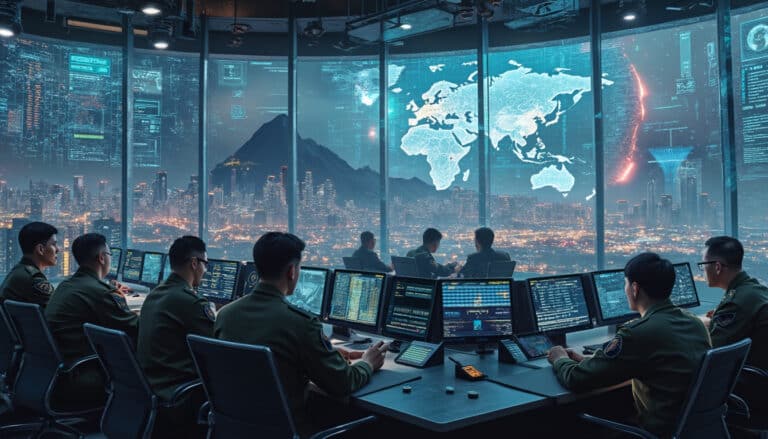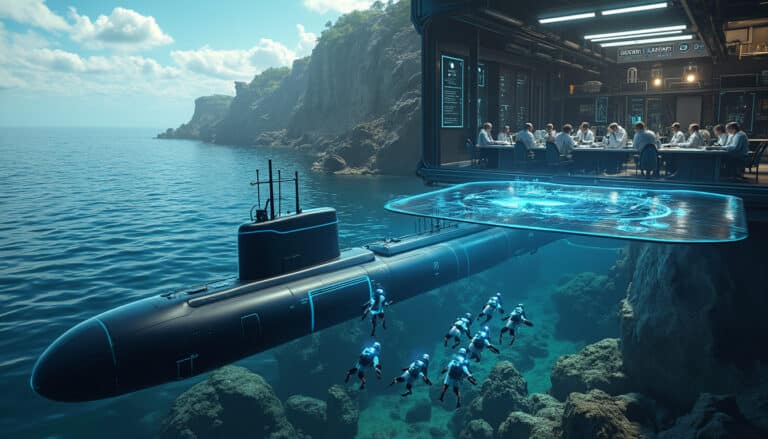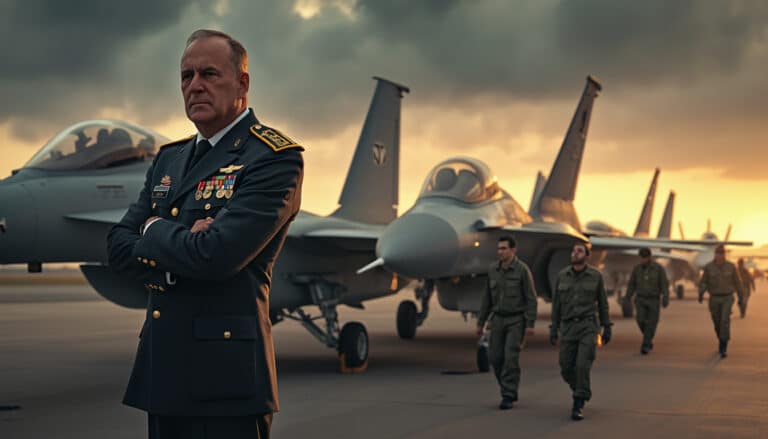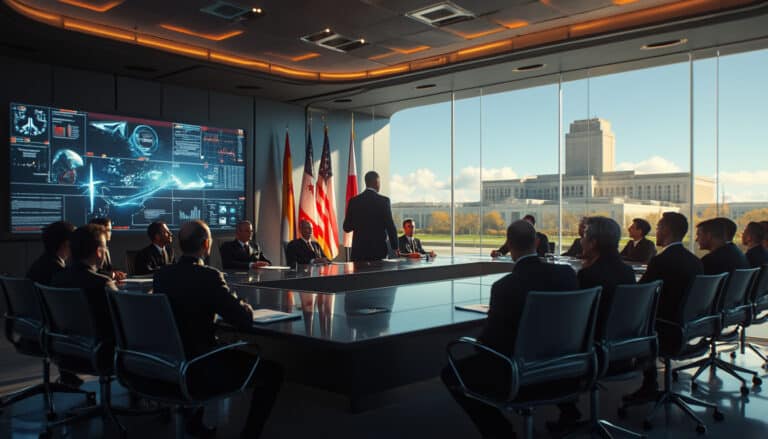The Pentagon’s obsolete arms procurement processes hinder the integration of innovative technologies. In response to this challenge, a commission of defense experts proposes ambitious reforms. The goal is to energize innovation and collaborate with agile start-ups.
The recommendations aim to modernize bureaucratic practices and open the door to new enterprises. By offering more flexibility to acquisition officials, the Department of Defense hopes to accelerate the implementation of advanced technologies. Furthermore, funding is planned to support the rapid development of essential capabilities. This initiative could transform the way the U.S. military responds to current threats.
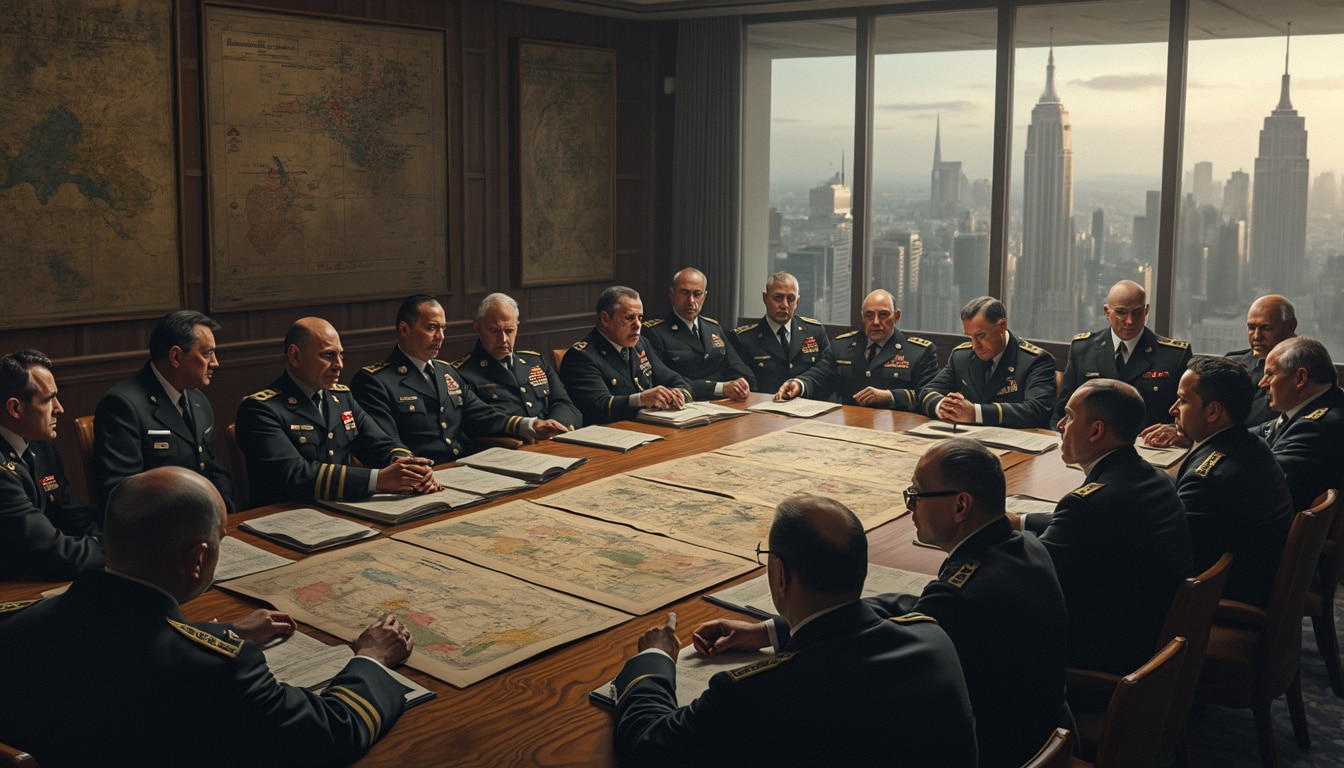
The U.S. armed forces currently face a major dilemma: the arms procurement procedures inherited from the Cold War hinder their ability to integrate innovative technologies. This situation was recently highlighted by a panel of defense experts, emphasizing the urgent need to reform acquisition methods to remain competitive against current threats.
Table des matières
Togglewhat is the impact of obsolete procurement processes on innovation
Since the end of the Cold War, the Department of Defense (DoD) of the United States has been utilizing procurement processes that have not kept pace with the rapid advancements in technology. These bureaucratic and rigid procedures limit the DoD’s ability to collaborate with innovative companies, particularly agile start-ups that could deliver disruptive solutions. According to the report from the Defense Innovation Adoption Commission, these obstacles significantly slow the integration of essential new technologies on the battlefield.
For example, the U.S. Marines have experimented with the Skydio X2 drone at Camp Lejeune, illustrating the potential of autonomous technologies. However, without a reform of the procurement processes, transitioning from the experimental phase to operational use can take several years, thus diluting the impact of innovations.
what are the experts’ recommendations to modernize defense procurement
The Defense Innovation Adoption Commission, led by former Secretary of Defense Mark Esper and former Secretary of the Air Force Deborah Lee James, has proposed ten key recommendations to energize innovation within the DoD. Among these, reforming bureaucratic practices and opening up to non-traditional companies are prioritized.
One of the major proposals is to allow acquisition officers to manage capabilities in portfolios rather than in independent programs. This flexibility would enable military services to respond more quickly to changing threats by reallocating funds within portfolios. Additionally, the commission recommends strengthening the link between experimentation and deployed capabilities, suggesting the creation of a pilot program by Congress with $250 million to accelerate the deployment of critical technologies.
These recommendations also aim to attract private capital to finance specific technological projects, thus facilitating collaboration with innovative companies. Similar initiatives are already underway, such as elevating the Defense Innovation Unit (DIU) to report directly to the Secretary of Defense and proposing the creation of a $1 billion coverage portfolio managed by the DIU.
how can new technologies be integrated more effectively
To maximize the impact of new technologies, it is essential to reduce the gap between testing phases and operational deployment. Currently, it can take two to four years for the DoD to acquire systems that have demonstrated their operational relevance during exercises and demonstrations. By establishing specific pilot programs and providing rapid funding, the DoD could shorten this timeframe and make the latest technologies available to troops in a timely manner.
Initiatives like the DefTech Innovation and Technology Seminars also play a crucial role in facilitating dialogue between the DoD and technology innovators. These events help create synergies and identify solutions tailored to the specific needs of modern defense.
what are the barriers to adopting commercial technologies
The primary obstacle to adopting commercial technologies lies in the lengthy and inflexible planning and execution cycles of defense programs. Furthermore, there is a gap in knowledge regarding emerging technologies, complicating the task for decision-makers to identify and integrate relevant innovations.
The shrinking defense industrial base also complicates the situation, reducing the number of players capable of providing advanced technologies. To address this, the commission recommends strengthening partnerships with non-traditional companies and encouraging investment in high-potential technological projects.
what are the benefits of portfolio management
Adopting portfolio management allows for flexible resource allocation, which is crucial in an ever-evolving geopolitical environment. Rather than sticking to fixed programs, this approach provides the ability to redirect funds to the most promising or urgent technologies, ensuring a swift response to new threats.
This method also promotes better visibility over the full range of available technological capabilities, facilitating strategic decision-making. By granting acquisition teams greater autonomy in managing resources, the DoD can accelerate the deployment of innovations while maintaining rigorous control over finances and priorities.
how can the DoD attract more private capital
To attract more private capital, the DoD must create an environment where investments in defense technologies are perceived as safe and promising. Establishing specific pilot programs funded by the government can serve as a catalyst to draw in private investors by reducing the risks associated with new technological projects.
Moreover, strengthening collaboration with entities such as the Office of Strategic Capital can channel private capital toward high-priority technological projects. By adjusting requirements to include more venture capital-funded firms, the DoD can expand its network of partners and integrate innovations from various industrial sectors.
what initiatives have already been implemented to modernize acquisitions
Since the commission’s report, several initiatives have been launched to modernize the DoD’s acquisition processes. Elevating the Defense Innovation Unit (DIU) to a direct report to the Secretary of Defense is a significant step towards better integration of commercial technologies. Additionally, the proposal from the House of Representatives to create a $1 billion coverage portfolio managed by the DIU aims to accelerate the deployment of new systems.
At the same time, military agencies such as the Air Force, Army, and Navy have begun adjusting their requirements to include more companies supported by venture capital investors, thus opening the door to a greater diversity of suppliers and technologies.
what is the role of international collaboration in defense innovation
International collaboration plays a key role in defense innovation. By working with global partners, the DoD can access a broader range of technologies and expertise, thus accelerating the development and deployment of new capabilities. Initiatives like Sivers Semiconductors’ engagement in global projects for satellite network interoperability illustrate the importance of such collaborations.
These partnerships not only allow for sharing the costs and risks associated with technological development but also help standardize cutting-edge technologies, facilitating their large-scale adoption. Moreover, international collaboration can strengthen strategic alliances and enhance collective capacity to address emerging threats.
how can the armed forces stay at the forefront of innovation
To remain at the forefront of innovation, the armed forces must adopt a culture of flexibility and adaptability. This involves continuously revising acquisition strategies to quickly incorporate new technologies and promoting an open mindset towards public-private partnerships. Emphasis should be placed on ongoing training for acquisition personnel, ensuring they are informed of the latest technological trends and best practices in innovation management.
Furthermore, encouraging experimentation and testing of new technologies in controlled environments allows for testing and refining solutions before their large-scale deployment. By investing in research and development programs, such as those recommended by the commission, the DoD can anticipate technological evolutions and prepare its armed forces to tackle future challenges.

















